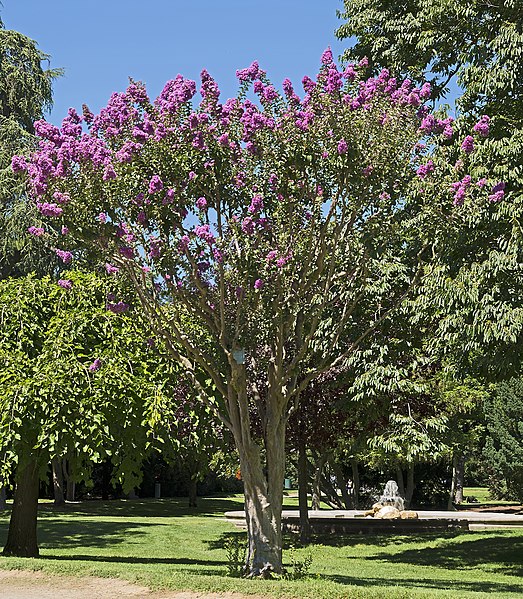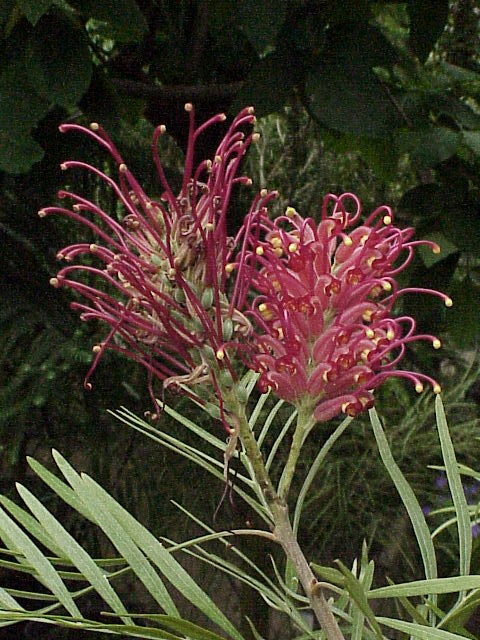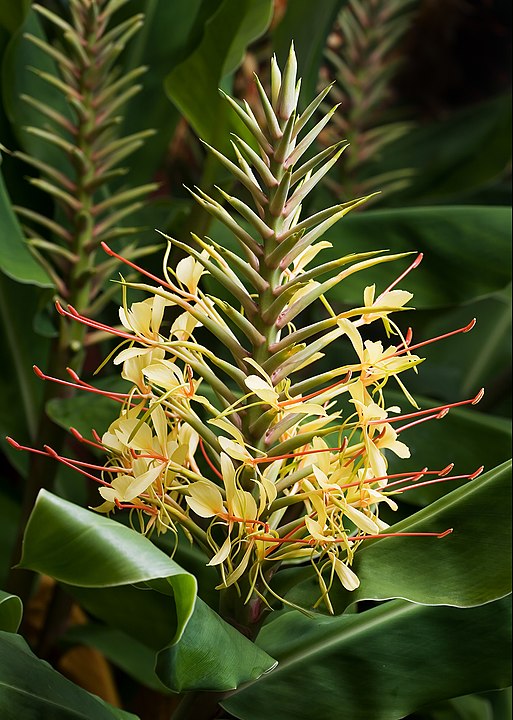kāhili
/ kā.hili /1. nvt., Feather standard, symbolic of royalty; segment of a rainbow standing like a shaft (also a sign of royalty); to brush, sweep, switch (kā- #2 + hili).
- Examples:
- Haku ʻia naʻe hoʻi ka hulu o ka moa i kāhili i mua o nā aliʻi; kāhili ʻia naʻe hoʻi kō kua (FS 101), chicken feathers indeed are woven into a standard for the presence of the chiefs; your back is brushed by the kāhili.
- References:
- See uhao and kāhili chants, ʻouʻou #1 and uluaoʻa #2.
2. n., The crape myrtle (Lagerstroemia indica 🌐), an ornamental shrub from China, with small oval leaves and panicles of pink, white, or purple crapy flowers.
- References:
- Neal 618.
3. n., A small tree (Grevillea banksii 🌐) from Australia, related to the silky oak, ʻoka kilika, but the leaves with fewer subdivisions and the flowers red or cream-white. This is a later application of kāhili to a plant. Flowers not used for lies on head or around neck because of it irritating hairs, but made into leis for hats by sewing alternate rows of flower clusters and own leaves on pandanus band.
- References:
- Neal 321.
- See haʻikū.
4. n., Kāhili ginger (Hedychium gardnerianum 🌐), from the Himalaya region; much like the white ginger but with a more open flower head, the flowers with narrow yellow segment and one bright-red stamen apiece.
- References:
- Neal 253–4.
5. n., A seaweed, probably Turbinaria ornata 🌐.
Papa helu loli | Wehewehe Wikiwiki update log
 n., The
n., The  n., A small tree (
n., A small tree ( n., Kāhili
n., Kāhili  n., A
n., A